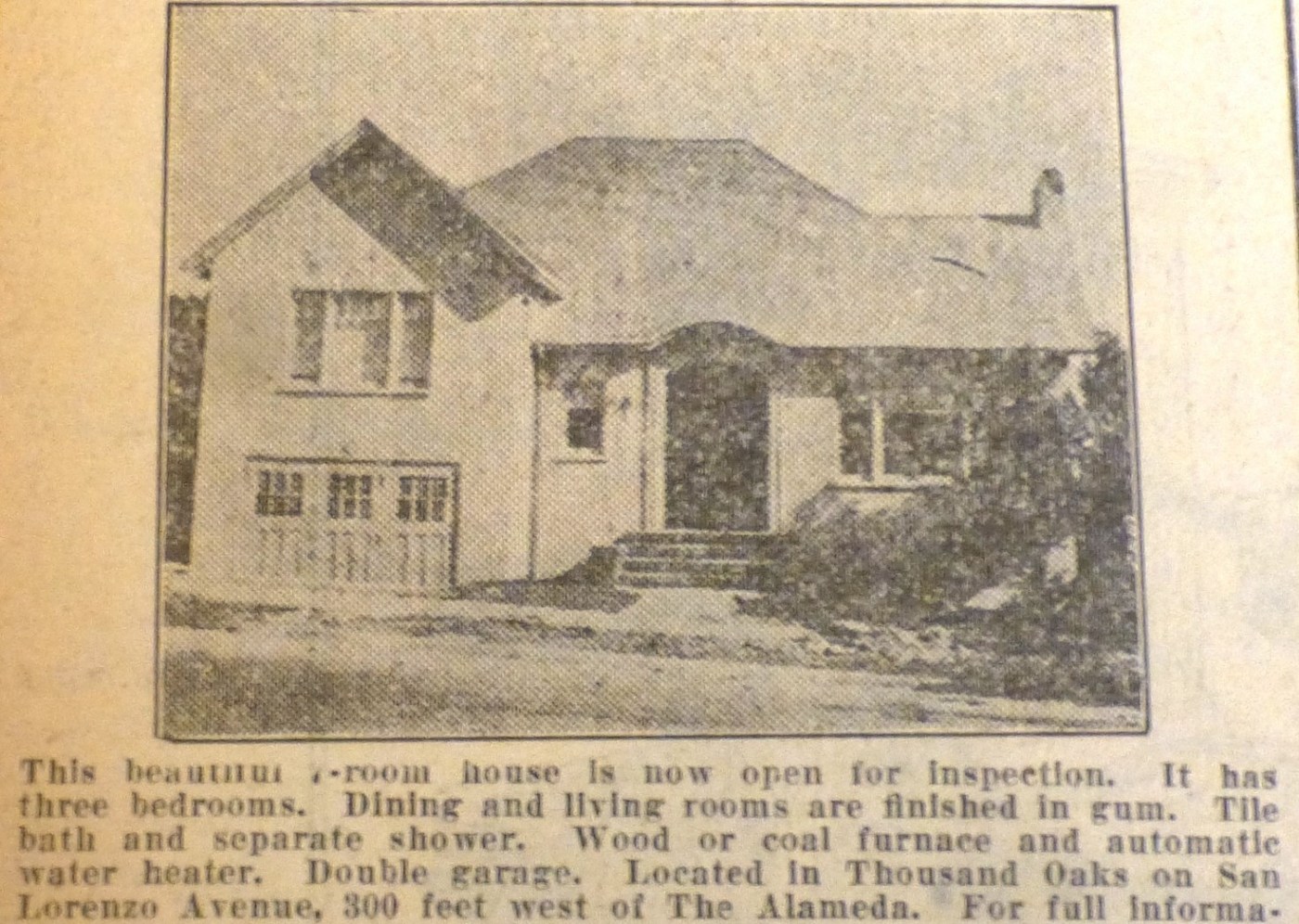
A century ago, the Berkeley Daily Gazette reported that Berkeley’s City Council, acting in response to a request from the city of Albany, voted to “cooperate with Albany in extending Santa Fe Avenue as a parallel highway to San Pablo Avenue.”
Berkeley Councilmember Elmer Nichols said “he favored making the extension, stating he believed it would tend to bring Albany residents to Berkeley’s shopping center, where now they continue down San Pablo Avenue into Oakland.” This was an argument often used for Berkeley street and highway changes.
Another interesting aspect of that Aug. 28, 1925, council meeting was that it “was held without a single citizen in the audience, the first time in the history of (the) city manager form of government. Lack of an audience was due largely to the fact there were no zoning matters on the program and the good weather.”
Real estate: Home sales were booming in Berkeley a century ago, and photographs of houses for sale in the Gazette were increasingly common. Many Berkeley houses built then survive today. The photo accompanying this column shows a house ad on San Lorenzo Avenue, just west of Berkeley’s street known as The Alameda, that was offered by real estate agent William Erving in the Aug. 29, 1925, Gazette.
This is a typical real estate ad a century ago in the Berkeley Daily Gazette for a house on San Lorenzo Avenue in Berkeley’s then-rapidly developing Thousand Oaks neighborhood. (photo courtesy of the Berkeley Historical Society and Museum)
The newspaper ad described it as a “beautiful 7-room house … It has three bedrooms. Dining and living rooms are finished in gum. … Wood or coal furnace and automatic water heater. Double garage.” The house very much appears to be 1858 San Lorenzo Ave., a house that still stands today with a very similar exterior appearance except for a gable added since then to the second floor along with solar panels and newer garage doors.
“Gum” in this description meant that the wood trim in the house was “gumwood,” or American Sweet Gum. Found in the U.S. Southeast, this was a popular wood for finishes. It was usually a deep golden amber color with varied dark checks and striations.
Expedition: The Aug. 28, 1925, Gazette announced that Dr. William Frederick Bade, a “noted archaeologist, author and lecturer” would undertake a December expedition from Berkeley to “Palestine, Syria and Mesopotamia.” Bade anticipated bringing discoveries from his eight-month sabbatical back to the Pacific School of Religion for display.
Bade is known today as a significant figure in the history of Biblical archaeology, applying science to support or disprove aspects of Biblical history. His 1926 expedition would be the first of five to Palestine.
Auto racing: Berkeley police stopped what they describe as an “early auto race” along San Pablo Avenue from University Avenue south into Oakland on Aug. 31, 1925. A Berkeley police officer saw two cars speeding along at up to 50 miles an hour and chased down one of them. The driver, from Richmond, was cited and given a court date. The other car escaped, but the police had recorded its license number.
Victim’s remains: On Aug. 29, 1925, a group of “Berkeley scoutmasters” “began a search of the country between the El Cerrito swamp and the bay shore in the hope of finding the torso of Mrs. Bessie Loran, portions of whose head have been found in the swamp.”
A suspect in her apparent murder was also being sought by police, but so far “without discovery of where the crime was committed or its real motive.” The article also noted that Mrs. Loran’s dental chart was stolen from the offices of her Oakland dentist. A suspect of interest was being sought but had disappeared from his own home and his mother-in-law’s Fruitvale-district Oakland home “under the eyes of police watching the house.”
Bay Area native and Berkeley community historian Steven Finacom holds this column’s copyright.